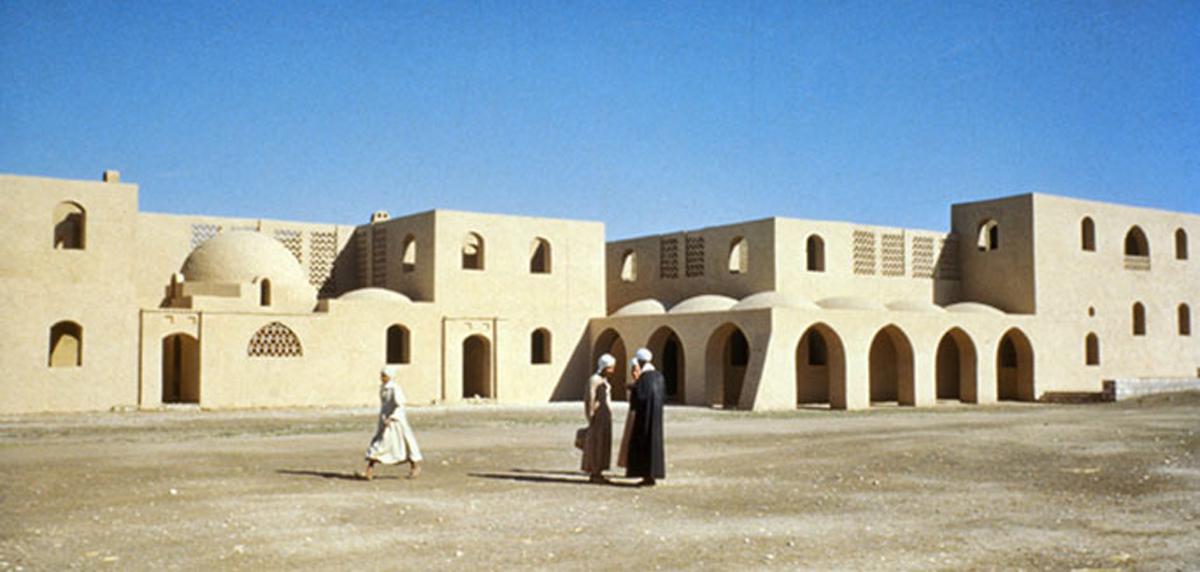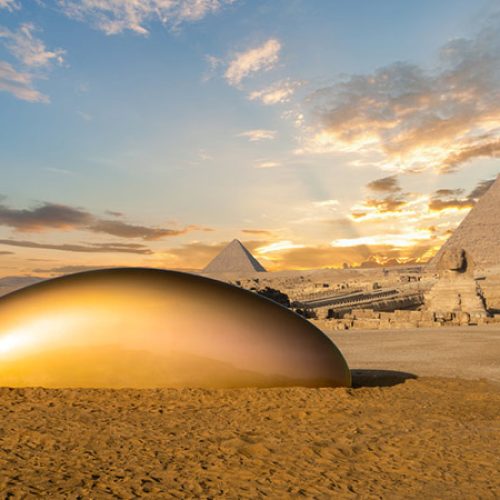From the energy and hustle of men sat at cafes on the outskirts of Cairo, to the iron-willed eyes of women walking the medinas of Fes and Tripoli – the keys to Hassan Fathy’s aesthetic world and the social inspiration behind his work are hidden within each of them.
Egyptian architect Hassan Fathy’s use of traditional techniques and local materials is still studied across the world by a plethora of young designers yearning for a new architectural language. Fathy’s architecture is solar and communal, yet earthy and modest just like the traditional Arab world that inspired him.
Fathy was infatuated with the ancient traditions of Egypt and its people, and went on to spend his life chasing one single idea: how to leverage a country’s architectural language to “revive people’s faith in their own culture”.
The town of New Gourna is easily one of his most important projects. Built near Luxor between 1945 – 1948 (a place where the Egyptian government needed to relocate up to 20,000 ‘tomb raiders’ that had lived for over a decade raiding ancient tombs in the valley of kings). And his work on the town of New Baris in central Egypt, which was built to host 250 families that were attracted by a newly discovered well that could have irrigated thousands of hectares of previously arid land. The choice of local materials and the participation of villagers in the design of their own house contributed to make these projects economically independent from imports while architecturally unique to their surrounding and way of living.

But the visionary architect’s enlightened ideals and strikingly beautiful design didn’t always translate into successful communities. Many of the houses in New Gourna lay empty for years, with inhabitants not keen on moving in. In his eagerness to protect the local dwellers from the influences from the modern world, Hassan Fathy self-handedly curtailed their freedom of choice through solutions that lacked the intuitive power to be automatically embraced.
Some of these solutions—the cost-efficient mud brick domes that adorned the New Gourna—were considered profane, while others a bourgeois waste of space (many of Fathy’s elegant courtyards became cowsheds). And in a more emblematic case, Fathy decided against running water in some houses arguing that this way villagers would have preserved their traditional rituals. All in all a romantic, and somehow paternalistic approach that in an age of hyper-connectivity and celebration of individuality proved self-defeating.

Open a window today in Beirut, Jeddah, Amman, Muscat or Cairo and what you see is more influenced by the modernist ‘domino house’ envisaged by Le Corbusier than by ideas of traditional Arab architecture: stacked-up and often unfinished houses built of cement blocks that have become the de facto vernacular of our towns despite the efforts of Hassan Fathy and others of his enlightened contemporaries such as Ramses Wissa Wassef.
Yet Fathy’s intuition of encouraging communities to build their specific reality on the basis of local materials and environments, is extremely fertile terrain for today’s designers. From a first wave of globalisation where construction required standard pieces produced centrally (mostly in the industrial plains of the West and the Far East) and then shipped around the world, a new breadth of architects such as Francis Kéré and Wang Shu in parallel with engineers informed by new technologies (biomaterials and 3D printing) are today continuing Fathy’s own tradition of decentralization of production and design.









